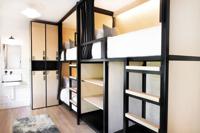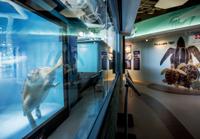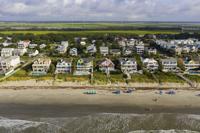Early in the summer, bookings at South Carolina hotels were picking up steam. From mid-May to late June, the statewide occupancy rate increased each week, from less than 40 percent to a peak of about 57 percent.
But coronavirus cases were rising, too, and as the state emerged as a hotspot, travelers became more wary. Hotels started to report cancellations, and rates dipped for a couple of weeks.
Since then, the virus's spread in the state has slowed, and South Carolina hotels have been about half full. Weekly occupancy rates have hovered at that point —give or take a few percentage points — for about 2½ months so far.
It's hard to say how long that will continue, said state tourism director Duane Parrish.
"Occupancy could be flat in the fall," said Parrish, who does anticipate "closing the gap" between last year's figures and 2020 numbers.
A 50 percent rate, for example, would look better against a rate of 64 percent from October 2019 than compared to last year's July average of 73 percent.
The only mid-pandemic figures that factored out to positive comparisons to 2019 were for the week ending Sept. 5. But those slight year-over-year gains were not the result of a significant surge in travel for the Labor Day weekend.
While the end-of-summer holiday provided a boost, figures for that week were up against days when travel was depressed by the threat of Hurricane Dorian last year. In its weekly release of tourism data, Parrish's department cautioned that the revenue looked "unusually elevated" over those dates for that reason.
Year-to-date, key lodging indicators, like the number of night stays sold at hotels or the revenue collected per available room, are down about 30 percent to 40 percent. The industry overall — valued this past February at $24 billion — has lost some $4.4 billion since the start of the pandemic in March.
For the month of August, average occupancy in South Carolina was 49 percent. In the Charleston area, the average was lower, about 44 percent for the month, according to the College of Charleston's Office of Tourism Analysis.
That's a decline of almost 37 percent compared to 2019 occupancy numbers for the Holy City. So far this year, nights sold at Charleston-area hotels have been down almost 42 percent.
Fall is typically a strong season for tourism in the Holy City, said Daniel Guttentag, the director for the Office of Tourism Analysis. Things don't start to really slow until November in a typical year.
Hotels in the Charleston region filled about 76 percent of their rooms in October last year. There's no telling what that figure will look like this year, but Guttentag said he wouldn't be surprised if occupancy remains somewhat stagnant.
"I think it’s reasonable to expect that we’ve plateaued, and that could continue for a while longer," Guttentag said, with the added caveat that he wouldn't put too much stock in any predictions right now.
Not only has tourism decreased, Guttentag said, but consumer behavior among travelers is changing, making it more difficult to project how the rest of the year will play out. One example of that is the comparative success of short-term rentals over traditional hotels as tourists seek out the privacy they can offer and the kinds of destinations where Airbnb and Vrbo properties are prevalent, like beach towns.
Of all the major tourism markets in the state, hotels in the Hilton Head Island area have been faring the best, according to frequent reports during the pandemic from the S.C. Department of Parks, Recreation and Tourism.
For the week ending Sept. 12, for example, the Hilton Head area filled about 61 percent of its hotel rooms, compared to a rate of 51 percent statewide.
One factor working in that market's favor, Parrish said, is that Hilton Head doesn't have the kind of "defined downtown area" that cities like Charleston, Columbia and Greenville do.
"Downtown areas nationwide are not doing well," Parrish said.
Those who are traveling are still gravitating toward to outdoor destinations. Fall bookings at South Carolina's state parks are ahead of last year, Parrish noted, and he said he expects the mountainous areas of the Upstate won't have a hard time attracting hikers as the weather starts to cool.
South Carolina is still focusing most heavily on tourists within driving distance, but the overall pool of potential visitors is growing.
The most recent round of the firm Longwood International's COVID-19 Traveler Sentiment Study found that half of Americans feel safe going on a trip this fall.
About two-thirds of the people surveyed who have plans to travel in the next six months are changing their plans because of COVID-19 — still a large share but the lowest figure since the first wave of the survey was sent out in early March.
One of the things they'll be watching, Parrish said, is whether virtual schooling affects fall travel. While the start of the school year usually means an end to much of the traditional family summer vacation business, the continued reliance on virtual schooling could prompt more families to take trips in the fall.
For now, though, Parrish said, it's too soon to say.
"filled" - Google News
September 23, 2020 at 04:17AM
https://ift.tt/3kF4wBH
SC hotels filled about half their rooms in August as occupancy growth stalls - Charleston Post Courier
"filled" - Google News
https://ift.tt/2ynNS75
https://ift.tt/3feNbO7
Bagikan Berita Ini

















0 Response to "SC hotels filled about half their rooms in August as occupancy growth stalls - Charleston Post Courier"
Post a Comment